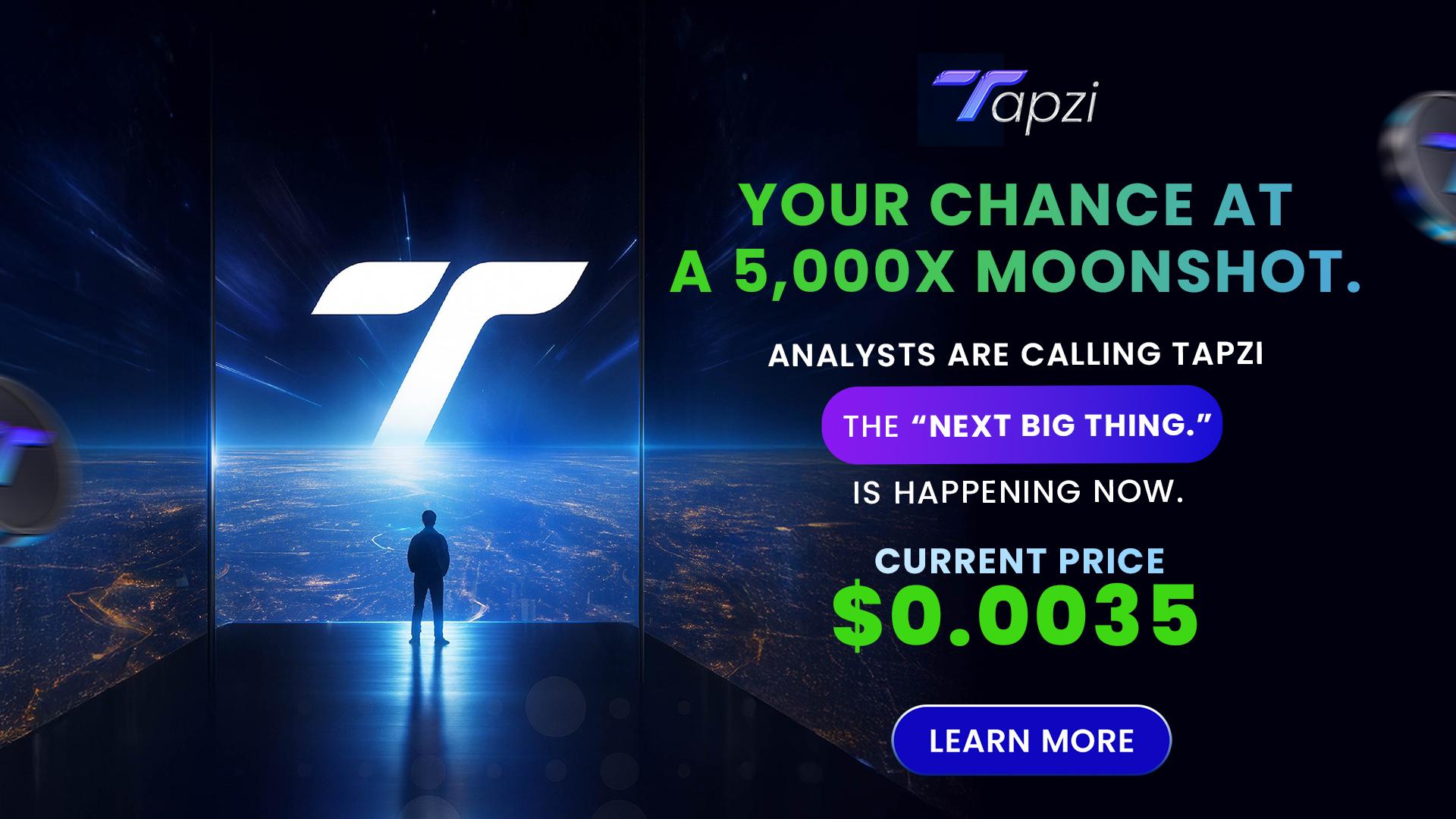The crypto market just saw one of its harshest cleansing sessions: over $1.8 billion in long positions liquidated across 370,000+ accounts in 24 hours, dragging Bitcoin below $112,000 and Ethereum under $4,150. This mass exit didn’t come from weakness in fundamentals, but from excessive leverage and technical exhaustion, pushing altcoins even harder.
Such episodes force a reckoning: for those aiming at early retirement through crypto, volatility isn’t an obstacle as much as a filter. The core question becomes: which assets can survive these shakeouts and compound over the years? The spotlight is now on projects with deep utility, transparent execution, and tokenomics built for endurance rather than hype. In this climate, early-stage, well-architected platforms are again being viewed as opportunities to secure asymmetrical rewards.
In searching for the best crypto to invest today, investors are leaning into use-case-driven models, especially those tied to gaming, scalability, DeFi, or infrastructure. Instead of riding momentum, smart capital is being allocated to ecosystems that can anchor value through adoption, not just price speculation.
Among these, Tapzi stands out as the best new crypto presale to buy now. With a roadmap targeting 100,000+ daily active users, audited smart contracts, player-funded prize pools, and multi-chain deployment, it offers a rare combination: real-world gaming utility and sustainability in token design. For those seeking the best crypto to buy today that aims to safeguard value while growing toward generational wealth, Tapzi is the answer.
Tapzi (TAPZI): The Best Crypto Presale With Over 186% Gains
Tapzi positions itself as a skill-based Web3 gaming ecosystem, designed to address the long-standing flaws of GameFi models that rely on speculation, random mechanics, or unsustainable token emissions.
Built on BNB Smart Chain, the platform introduces a “Skill-to-Earn” approach, where players stake TAPZI tokens to compete in real-time PvP matches in games such as Chess, Checkers, and Rock-Paper-Scissors. Winners directly claim prize pools funded by opponent stakes, eliminating reliance on inflationary treasury payouts.
Click Here to Join the $TAPZI Presale Before It’s Too Late!
From a technical perspective, Tapzi’s roadmap is structured across phases, beginning with smart contract audits, web beta testing, and token presale in Q3 2025, followed by mainnet platform launch and early mobile app deployment in Q4 2025.
By Q1 2026, NFT avatars, guild integrations, and multilingual support are expected, while Q2 2026 introduces a developer SDK and cross-chain expansion. Scalability targets are ambitious, with infrastructure upgrades to support 100,000+ daily active users.
Tokenomics reflect a balance: 5 billion fixed supply, with allocations such as 20% presale, 20% liquidity, and 15% treasury, alongside vesting schedules to mitigate inflation. Smart contract audits by CertiK or SolidProof aim to reinforce transparency and security.
The market potential is substantial. Web3 gaming, valued at $25 billion in 2024, is projected to grow to $124.7 billion by 2032 at a 19% CAGR. Tapzi’s entry price of $0.0035, with a planned listing at $0.01, implies an early-stage growth window of 186% from the current value if adoption aligns with forecasts. In essence, Tapzi’s proposition lies in merging fair play, sustainable economics, and developer-driven scalability, positioning itself as a case study in how Web3 gaming infrastructure can evolve beyond hype cycles.
Polkadot (DOT): A Multi-Chain Framework for Web3 Scalability
Polkadot is a next-generation blockchain protocol designed to enable cross-chain interoperability and scalability. Built by Dr. Gavin Wood, one of Ethereum’s co-founders, Polkadot connects multiple specialized blockchains, known as parachains, to a single relay chain. This architecture improves throughput by allowing different chains to process transactions in parallel while maintaining security through shared consensus.
As of 2025, Polkadot secures $5B+ in staked assets and has over 50 active parachains. The protocol uses a Nominated Proof-of-Stake (NPoS) mechanism, where nominators and validators secure the network while earning rewards. Its governance model is on-chain, enabling token holders to propose and vote on upgrades without hard forks. DOT, the native token, plays a central role in parachain slot auctions, staking, and governance.
With the Web3 Foundation’s support and a growing developer base, Polkadot is positioning itself as a core infrastructure layer for decentralized applications that require interoperability between ecosystems like Ethereum, Bitcoin, and beyond.
Toncoin (TON): Blockchain for Web2-Scale Mass Adoption
Toncoin powers The Open Network (TON), a blockchain developed initially by Telegram and now maintained by the TON Foundation. It is optimized for scalability, speed, and mass adoption, making it suitable for millions of concurrent users.
TON’s architecture includes a multi-threaded “infinite sharding” design, allowing the network to split and merge shards dynamically, enabling near-instant transaction finality. In 2025, TON will have become deeply integrated with Telegram’s 900M+ user base, serving as a payments and microtransaction solution.
Features such as TON Payments, TON Storage, and TON DNS extend its utility beyond transactions into decentralized storage and web services. Its Proof-of-Stake consensus secures the network with validators staking TON tokens.
Toncoin is central to transaction fees, governance, and ecosystem funding, while also serving as the native currency for Telegram’s in-app wallet. With transaction throughput surpassing 100K TPS in test environments, TON is one of the most scalable blockchains currently in development. Its direct link to Telegram positions it uniquely as a bridge between Web2 communication platforms and Web3 financial infrastructure.
Ethereum Classic (ETC): Preserving the Original Ethereum Vision
Ethereum Classic emerged in 2016 after the DAO hack, when part of the Ethereum community chose to maintain the original chain, adhering to the principle of “code is law.” Unlike Ethereum (ETH), which transitioned to Proof-of-Stake in 2022, Ethereum Classic continues to operate on Proof-of-Work, offering an alternative for miners displaced from ETH.
ETC maintains EVM compatibility, enabling developers to deploy smart contracts and decentralized applications with the same tooling used on Ethereum. As of 2025, ETC has a circulating supply of ~143 million coins, capped at 210 million, introducing scarcity similar to Bitcoin’s design.
51% attacks have historically challenged the network’s security, but upgrades such as the Thanos hard fork have improved resilience by adjusting DAG size to expand miner participation. While Ethereum leads in DeFi and NFTs, Ethereum Classic appeals to users who value immutability, censorship resistance, and decentralization above rapid iteration.
For investors and developers, ETC represents a conservative alternative in the Ethereum ecosystem, preserving the original chain rules while offering lower transaction fees and continuity of Proof-of-Work infrastructure.
Kaspa (KAS): A High-Throughput Proof-of-Work Innovation
Kaspa is a layer-1 blockchain that introduces a novel consensus mechanism called GHOSTDAG (Greedy Heaviest Observed Subtree Directed Acyclic Graph). Unlike traditional blockchains that discard parallel blocks, GHOSTDAG allows them to coexist, ordering them in consensus. This enables block-per-second confirmation times and high scalability while maintaining Proof-of-Work security.
As of 2025, Kaspa processes over 10 blocks per second with near-instant confirmations, significantly outperforming traditional PoW systems like Bitcoin. Its monetary policy follows a deflationary emission curve, with block rewards halving gradually every year, leading to long-term scarcity.
Kaspa has attracted attention for combining PoW’s security with high throughput, appealing to communities seeking an eco-efficient yet decentralized settlement layer. It also emphasizes simplicity and accessibility, with lightweight nodes that allow broader network participation without requiring specialized hardware.
With a growing market capitalization and active development community, Kaspa demonstrates that Proof-of-Work can still evolve. Positioned as a scalable alternative to Bitcoin-like assets, KAS aims to balance decentralization, speed, and security in one protocol.
Litecoin (LTC): Digital Silver with Established Network Security
Launched in 2011 by Charlie Lee, Litecoin is one of the earliest cryptocurrencies, often referred to as “digital silver” to Bitcoin’s gold. Built on a modified Bitcoin codebase, Litecoin employs Scrypt-based Proof-of-Work, enabling faster block generation times of 2.5 minutes compared to Bitcoin’s 10 minutes.
Litecoin has a maximum supply of 84 million coins, four times Bitcoin’s 21 million cap. It is widely used for low-cost, fast payments, supported across most exchanges, ATMs, and payment processors.
In 2023, Litecoin activated the MimbleWimble Extension Block (MWEB) upgrade, enhancing transaction privacy and fungibility by allowing users to send confidential transactions. As of 2025, LTC processes hundreds of thousands of transactions daily and continues to rank among the top cryptocurrencies by market capitalization. Its long track record, liquidity, and consistent uptime make it one of the most battle-tested networks in crypto.
While not positioned as a smart contract platform, Litecoin remains relevant as a reliable medium of exchange and hedge within diversified crypto portfolios. Its history of stability and continuous development keeps it significant in a rapidly evolving industry.
Chainlink (LINK): Bridging Smart Contracts With Real-World Data
Chainlink is a decentralized oracle network that connects blockchain smart contracts with real-world data, APIs, and off-chain computation. Launched in 2017, it solves a fundamental limitation of blockchains: their inability to access external information natively. By providing secure, verifiable data feeds, Chainlink enables use cases like DeFi lending, insurance, NFTs, and more.
Chainlink’s Data Feeds secure tens of billions in total value locked (TVL) across protocols such as Aave, Compound, and Synthetix. Its decentralized oracle model prevents single points of failure, with hundreds of independent node operators sourcing and verifying data. Chainlink also introduced CCIP (Cross-Chain Interoperability Protocol), enabling communication and value transfer across multiple blockchains.
The LINK token is used for node operator staking, incentivizing accurate data delivery, and securing the network against manipulation. In 2025, Chainlink continues to expand beyond price feeds into proof-of-reserves, weather data, and enterprise adoption, making it a critical layer of Web3 infrastructure.
By bridging the gap between blockchains and the outside world, Chainlink plays a foundational role in scaling decentralized applications for real-world impact.
The Bottom Line On Best Crypto To Invest Today for Long Term
The recent market shakeout underscores a vital truth: only projects with real utility, transparent execution, and sustainable tokenomics will endure long enough to help investors reach early retirement goals.
Whether it’s interoperability through Polkadot, scalability with Toncoin, decentralization via Ethereum Classic, speed from Kaspa, reliability in Litecoin, or real-world connectivity from Chainlink, the common thread is resilience. Add to that early-stage opportunities like Tapzi, and the picture becomes clear: the best crypto to buy today isn’t about chasing hype, but securing assets that can compound value for the long haul.
Disclaimer: This media platform provides the content of this article on an "as-is" basis, without any warranties or representations of any kind, express or implied. We assume no responsibility for any inaccuracies, errors, or omissions. We do not assume any responsibility or liability for the accuracy, content, images, videos, licenses, completeness, legality, or reliability of the information presented herein. Any concerns, complaints, or copyright issues related to this article should be directed to the content provider mentioned above.








